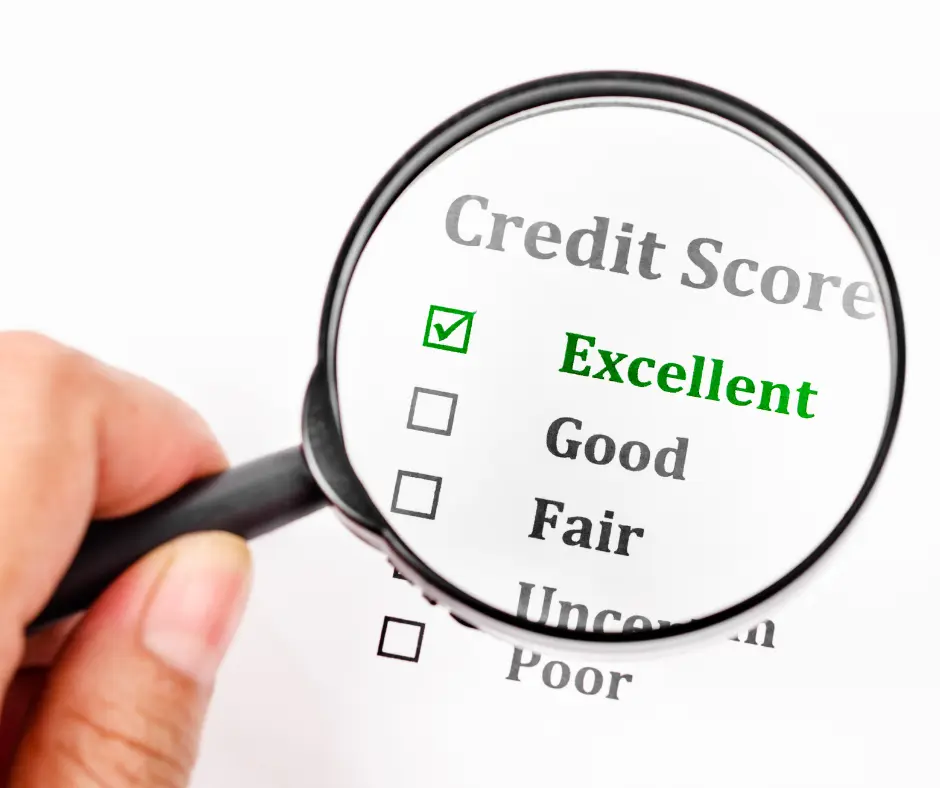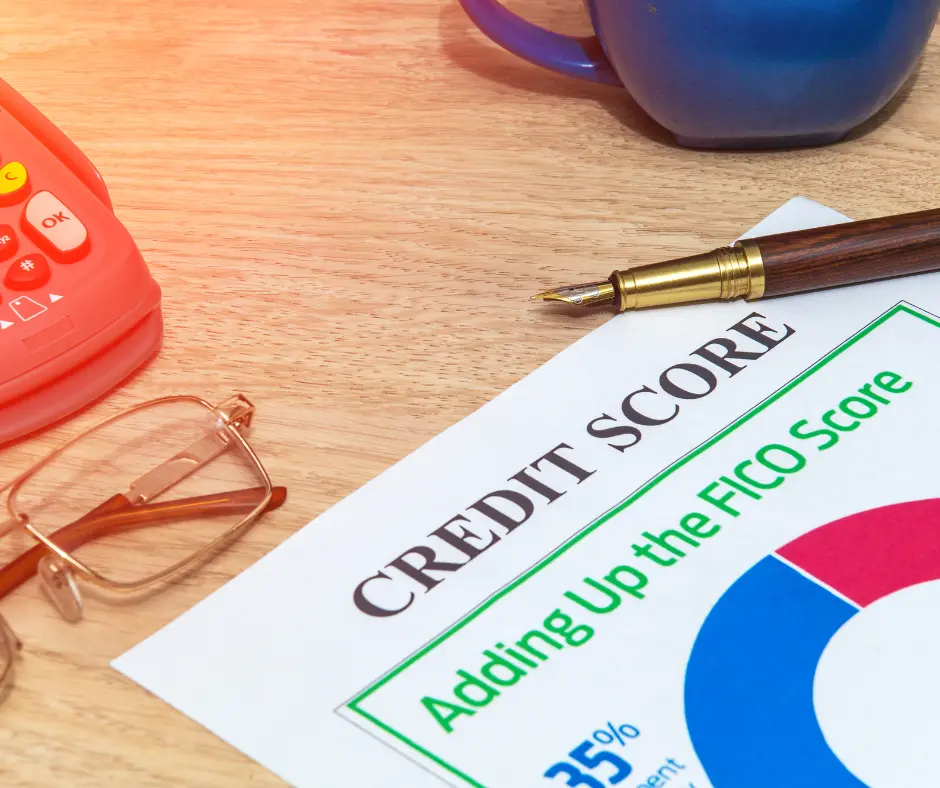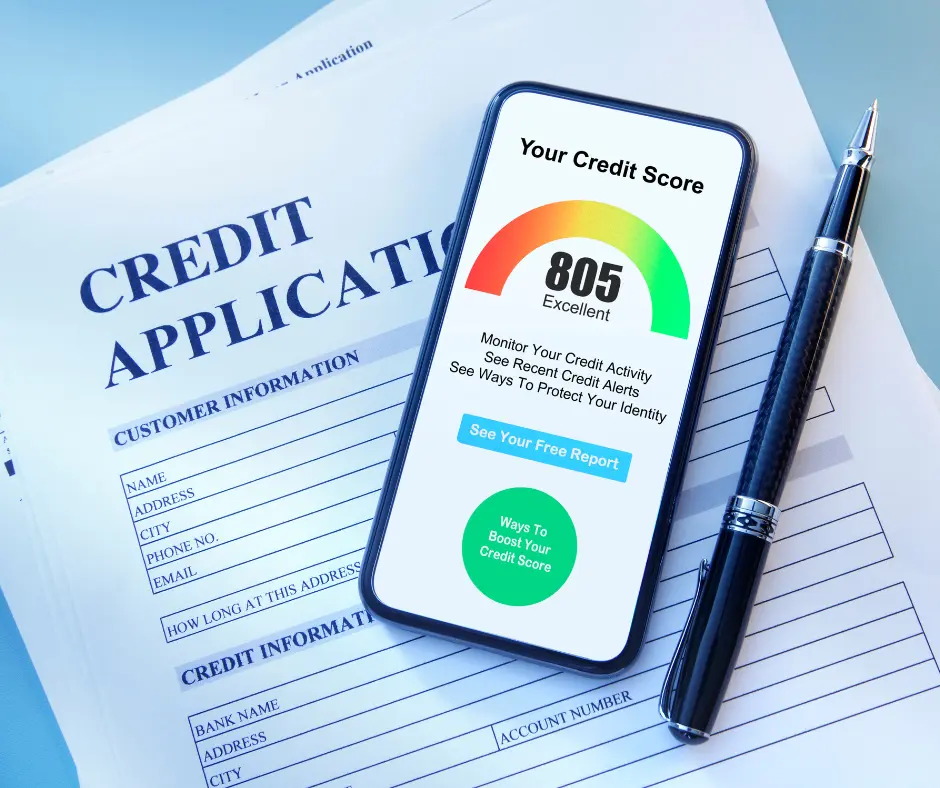How Your Credit Score Impacts Your Roof Loan Interest Rate

Your Winnipeg home needs a new roof. The question is how much you’ll pay to finance it. Your credit score determines your roof loan interest rate. The difference can cost you thousands of dollars over the life of your loan.
Winnipeg homeowners with credit scores above 740 qualify for rates 1 to 2 percentage points lower than borrowers with fair credit. A score of 640 can push your rate up by 2 to 4 percentage points. That adds hundreds to your monthly payment and thousands to your total cost.
You can improve your position before you apply. Check your credit report for errors. Pay down high balances. Dispute inaccuracies. Get multiple quotes from lenders and request rates in writing. These steps lower your long-term cost and protect your home from Manitoba’s harsh winters.
Key Points
- Higher credit scores mean lower roof loan rates. Winnipeg borrowers with scores of 760 or above often see APRs near 6%. Scores between 640 and 699 commonly face rates from 12% to 20%.
- The numbers matter. A $10,000 roof loan at 6% over 5 years costs $1,620 in interest. The same loan at 15% costs $4,282 in interest. That’s a $2,662 difference.
- To get the best rate, reduce your credit card balances below 30% of your limit. Dispute errors on your credit report. Avoid opening new accounts for 3 months before you apply. Compare at least three lenders. Aim for a score above 720 before you submit your application.
Understanding Credit Scores
Lenders pull your credit file every time they evaluate your roof loan application. They use it to assess risk and set your price. Credit scores from Equifax and TransUnion range from 300 to 850. Movement between score bands changes what lenders will offer you.
Five factors drive your score. Payment history carries the most weight. Amounts owed comes second. Length of credit history, new credit applications, and credit mix round out the calculation. These components show lenders how likely you are to repay on time.
Specific thresholds change your options. Many home improvement lenders treat scores above 720 as prime. You qualify for the best promotional rates. Scores below 620 push you into subprime pricing with higher APRs. You may need a secured product like a home equity line of credit.
What is a Credit Score?
A credit score is a three-digit number that predicts how likely you are to repay borrowed money on time. The FICO model weighs factors as follows: 35% payment history, 30% amounts owed, 15% length of credit history, 10% new credit inquiries, and 10% credit mix. Lenders use this number to compare thousands of applicants quickly.
Credit bureaus compile your data. They track balances, payment records, public records, and credit inquiries. A late payment drops your score. Credit utilization above 30% hurts you. Several recent hard inquiries damage your number.
Good behaviors raise your score. Pay down balances below 30% of your limits. Bring delinquent accounts current. You can see improvement within a few months.
Why Credit Scores Matter in Lending
Lenders price risk through score bands. That pricing sets the APR on your roof loan. A contractor-sponsored offer might advertise 7% APR for prime borrowers. Borrowers with fair credit see rates from 12% to 20%. Higher APRs mean more interest over the loan’s life.
Your score changes the terms you get. Strong scores yield longer terms, lower down payments, and fewer documents. Weak scores trigger different requirements. You may need higher cash reserves, a co-signer, or a secured option like home equity. These requirements change your risk and your costs.
Here’s a real example. A $20,000 roof loan over 10 years at 7% APR costs $233 per month. Total interest is $7,900. At 15% APR, your payment jumps to $323 per month. Total interest climbs to $18,700. That $10,800 difference shows why even a modest score improvement saves Winnipeg homeowners thousands.

How Your Credit Score Affects Roof Loan Interest Rates
Lenders quantify your default risk. Higher credit scores mean lower APRs. Canadian lenders show spreads of 3 to 12 percentage points between prime and subprime borrowers. That gap can double your total interest on a multi-year roof loan.
Look at a $20,000 loan over 10 years. At 6% APR, you pay $6,549 in interest. At 15% APR, you pay $19,019 in interest. The difference is $12,470. This hits your household budget hard.
You control several factors. Choose a secured product like a home equity loan or HELOC. You’ll lower your APR by several points compared to an unsecured personal loan. Improve your score by 30 to 50 points before you apply. You can trim your APR by 0.5 to 3 percentage points.
Shop multiple offers. Submit rate inquiries within a 14 to 30 day window. Credit bureaus cluster inquiries during this time. Your score impact stays minimal while your negotiating power grows.
The Relationship Between Credit Scores and Interest Rates
Lenders map your credit score to pricing tiers. They adjust based on your debt-to-income ratio, loan term, and collateral. Underwriting models add rate premiums for lower score bands.
Here’s how it works. A lender might add 1 to 3 percentage points for scores between 700 and 739. Scores from 650 to 699 get 3 to 6 points added. Scores below 620 face 6 or more points. You might get denied entirely. Your credit mix and recent late payments also affect these adjustments.
Secured loans get better treatment. If you have enough home equity in your Winnipeg property, a HELOC or home equity loan can place you in a lower rate category. This works even with a mid-range score because the lender has collateral. High credit utilization hurts you. Recent bankruptcies hurt you. Multiple recent inquiries drive up your APR or trigger rejections. Check these items before you apply.
Rate Examples Across Different Credit Scores
- Excellent credit, 750 or above, might get 6% APR. On a $20,000 loan over 10 years, you pay $221 per month. Total interest is $6,549.
- Good credit, 700 to 749, often sees 8% APR. Your monthly payment is $240. Total interest is $8,776.
- Fair credit, 650 to 699, can jump to 12% APR. You pay $286 per month. Total interest reaches $13,334.
- Poor credit, below 650, may face 15% to 18% APR. At 18% APR, your monthly payment is $360. Total interest exceeds $22,000.
Small APR differences create large cost differences over time. Winnipeg homeowners who finance $15,000 to $30,000 for a quality roof replacement need to understand this. A 2 to 4 point rate improvement saves thousands in total interest. It reduces your monthly strain. This matters if you plan to refinance or sell within a few years.
Take action now. Check your credit report for errors. Reduce revolving balances below 30% of your limit. Aim for under 10% if possible. Avoid opening new credit accounts 60 days before you apply. Gather quotes from 3 to 5 lenders.
If you have equity, compare HELOC or home equity loan options to unsecured personal loans. Secured options yield the lowest APR within the same credit tier. Strong income documentation and low debt-to-income ratio can shift your offer into a better pricing band.
Tips for Improving Your Credit Score Before Applying
Focus on actions that produce fast results. Clean up credit report errors. Lower your credit utilization ratio. Establish consistent on-time payments. Small changes create big benefits.
Lower your credit utilization from 60% to below 30%. You can see a score boost within a few billing cycles. This can happen before your roof loan application.
Review your credit report from Equifax and TransUnion at least once per year. Check more often when you’re preparing for a major loan. These free reports help you spot problems early.
Dispute inaccuracies immediately. Use documented evidence. Follow up until the issue is resolved. Credit bureaus have 30 to 45 days to investigate.
Set up automatic payments for recurring bills. Your payment history is 35% of your FICO score. Automation protects this factor.
Pay down high balances on credit cards. Start with cards that have the highest interest rates. This cuts your utilization ratio and reduces your ongoing interest costs.
Be careful about closing unused credit cards. Closing accounts with high annual fees makes sense. However, closing cards can raise your utilization ratio if you carry balances on other cards. Keep older accounts open to maintain credit history length.
Consolidate balances with a lower-rate personal loan only if the new payment reduces your total monthly interest cost. You must commit to avoiding new credit line openings. Understand how these moves affect your roof loan interest rate. This helps you prioritize the right steps.

Regularly Checking Your Credit Report
Pull free reports from Equifax and TransUnion every 30 to 90 days when you’re planning a roof loan. Look for incorrect balances, unfamiliar accounts, and wrong personal information. A single false late payment can drop your score by dozens of points. It changes the interest tier a lender offers. This can cost you thousands.
File disputes online with clear supporting evidence. Use bank statements or correspondence records. Credit bureaus have 30 to 45 days to investigate. Keep a detailed log of dispute reference numbers. Follow up regularly.
Lenders often re-run credit reports before they finalize loans. Resolved items can quickly restore access to better rates.
Paying Bills on Time
Payment history makes up 35% of your FICO score. Late payments damage your score more than most other factors. Canadian creditors report accounts once a payment reaches 30 days past due. Bring accounts current before that threshold. You prevent a formal negative entry on your credit file.
Use automatic payments or calendar reminders. Tie them to your statement closing date, not just the due date. This avoids timing mistakes that increase your reported balances.
Contact creditors immediately if cash flow becomes tight. Request hardship plans. Some creditors agree to temporary payment adjustments that don’t report as late. Get the terms in writing.
A single 30-day late payment can cost you tens of points. It pushes you into a higher interest rate tier. Automate your payments. Prioritize keeping accounts current. This protects your borrowing power.
Factors That Affect Roof Loan Approval and Interest Rates
Canadian lenders combine multiple risk signals to price your roof loan interest rate. They look at your credit score, debt-to-income ratio, requested loan amount, and term length. A Winnipeg borrower with a 760 credit score gets offers 2 to 4 percentage points lower than a borrower at 640 for the same unsecured personal roof loan. Secured home equity loans run 2 to 4 points lower than unsecured options. The lender’s risk is lower.
- Lenders evaluate these factors:
- Credit score and credit history.
- Debt-to-income ratio.
- Loan amount and purpose.
- Loan term length.
- Collateral and loan-to-value ratio.
Lenders follow specific guidelines. Many prefer debt-to-income ratios below 36%. Some cap approvals near 43%. Higher DTI, limited credit history, or large existing balances push rates up. You may need to provide collateral.
You can improve an offer. Add a creditworthy co-signer. Increase your collateral. Select a shorter loan term. These moves show lower credit risk.

Debt-to-Income Ratio
Your debt-to-income ratio, or DTI, equals your total monthly debt payments divided by your gross monthly income. You earn $6,000 per month and carry $2,400 in monthly debt. Your DTI is 40%. This level raises your interest rate. It can limit your unsecured loan amount.
Canadian lenders use 36% as a pricing breakpoint. Cross 43% and you often get pushed into higher rate underwriting. You may face denial.
Reduce your DTI by paying down revolving balances. Eliminate small loans. Temporarily increase your documented income. Pay down two credit cards from 90% to 30% utilization. You can lower your DTI by several percentage points. This often reduces your offered APR by 0.5 to 1.5 percentage points.
You can also add a creditworthy co-signer. Choose a secured loan option that relies on collateral more than DTI. These steps improve your approval odds.
Loan Amount and Term Length
Loan size and term length affect your monthly payment and total interest paid. A $10,000 roof loan at 7% for 5 years carries a $200 monthly payment. Total interest is $1,980. Extend that loan to 10 years at 9%. Your monthly payment drops to $125. Total interest climbs to $5,024. You pay more than double in interest.
Shorter terms mean higher monthly payments. They also mean far lower total interest.
Lenders price smaller unsecured loans at higher rates. Fixed origination costs and default risk increase their return. Larger loans or loans secured by your home qualify for better pricing. Secured home equity loans fall in the 4% to 8% range for well-qualified borrowers. Unsecured personal loans for home repairs range from 7% to 20%. Your credit profile determines where you land.
Choose a shorter term if your budget allows. You save thousands in interest. Select a longer term only if cash flow requires it. Compare APR and total interest across three or more lenders. Calculate both your monthly payment and cumulative cost before you sign. Pick the loan structure that minimizes total cost while keeping payments manageable.
How to Prepare for a Roof Loan Application
Gathering Necessary Documents
Collect essential identification. You need government-issued ID, your Social Insurance Number, and proof of residency. Lenders require your two most recent pay stubs. Self-employed borrowers need two years of tax returns and Notice of Assessment from CRA. Everyone needs T4 slips to verify income. Missing documents delay approval or result in higher rates.
Include your three most recent months of bank statements. These show liquidity. Add any asset statements you plan to use for a down payment.
Attach documents that connect the loan to your roofing project. Get a detailed written contractor estimate with itemized costs. Verify the contractor’s license and insurance certificates. Provide your current mortgage statement. Include your homeowner insurance declaration page. Add any recent roof inspection or damage assessment reports.
Missing contractor documentation or insufficient insurance coverage stalls loan processing. Lenders view these as risk factors. They may force higher interest rates.
Understanding Your Roof Loan Options
Compare secured and unsecured financing side by side. Determine which fits your financial situation best.
A home equity loan or HELOC offers the lowest APR. Rates typically run 4% to 8% if your credit score exceeds 720 and you have sufficient equity in your Winnipeg home. Terms range from 5 to 20 years.
Unsecured personal loans for home improvement range from 6% to 18% for borrowers with good credit. Scores below 620 can face rates from 18% to 36%.
Here’s a concrete example. A $15,000 loan at 6% over 60 months costs $289 per month. The same amount at 18% costs $387 per month. That’s a $98 monthly difference. It compounds to thousands over the loan term.
Factor in origination fees when you compare offers. Check for prepayment penalties. Look for required escrow arrangements for insurance or taxes. Some Winnipeg homeowners qualify for specialized renovation financing if credit is marginal. These programs add documentation requirements and contractor approval processes.
Always request the APR and complete fee schedule in writing. This lets you compare total costs across lenders accurately.
Finding the Best Roof Loan Offers
Shop at least three different lenders before you commit. Compare APR, not just headline interest rates. Origination fees and points can add 1 to 3 percentage points to your true borrowing cost.
Look at a $12,000 roof replacement. At 6% APR over 60 months, you pay $231 per month. Total interest is $1,860. At 12% APR on the same term, your monthly payment rises to $265. You add $2,100 in interest. These small rate differences impact both cash flow and total cost.
Use soft-pull prequalifications to view estimated rates. Your credit score stays protected. Winnipeg homeowners with scores above 740 should expect the best unsecured personal loan offers in the mid-single digits. HELOC rates fall in the low single digits. Scores below 640 will see offers from high single digits to mid-20s APR.
Verify loan term details. Check for prepayment penalty clauses. Ask whether the lender requires an escrow account. Find out if they place a first lien on your property.
Comparing Canadian Lenders
Compare credit unions, major banks, online lenders, and contractor financing programs. Evaluate APR ranges, fees, minimum credit score requirements, and funding speed. Request written rate sheets or Loan Estimates from each lender. This enables accurate comparisons.
Credit unions often deliver the lowest APRs. They typically run 0.5% to 1.5% below major banks. Membership requirements apply. Origination fees are usually low or zero. This is an excellent option for Manitoba residents with scores of 650 or above.
National and regional banks provide stable underwriting and branch access across Winnipeg. APRs are competitive for borrowers with 700 or above scores. Watch for origination fees and slower funding timelines.
Online lenders offer fast prequalification and funding. APR spreads run wide, from 6% to 36%. They work best for borrowers with strong credit or those needing quick turnaround with fair credit.
Home equity loans and HELOCs feature lower rates. Rates are often variable. Starting APRs range from 4% to 9%. You need home equity and the lender places a lien on your property. Winnipeg real estate provides strong collateral.
Contractor and manufacturer financing commonly advertises promotional 0% APR for 6 to 18 months. After the promotional period, APRs jump to 18% to 30% or higher. Read deferred interest terms carefully to avoid expensive surprises.
Negotiating Better Terms
Lead negotiations with competing offers. A Manitoba credit union quotes 5.5%. A bank offers 6.5%. Ask the bank to match or beat the credit union rate. Lenders often lower their margin by 0.25% to 0.75% to keep your business. This works well for qualified borrowers.
Request origination fee waivers or point reductions. Save a 1% origination fee on a $12,000 loan. You immediately cut your upfront cost by $120. Redirect that money toward higher quality roofing materials or emergency reserves.
Offer concessions that reduce lender risk. Propose automatic payment enrollment for a 0.25% rate discount. Increase your down payment to lower the loan-to-value ratio. Shorten the term by 12 months to show reduced credit risk. These moves commonly earn rate reductions or fee waivers.
Bring documentation that strengthens your financial profile. Provide two months of bank statements, recent pay stubs, and evidence of other on-time loan payments. Present a strong debt-to-income ratio. Show pre-approval from another competitive lender. This provides negotiating power. It can convert a tentative offer into a much lower APR.

Taking Action to Secure the Best Roof Loan Rate
Your credit score directly determines the interest you pay on a roof loan. It’s one of the most controllable factors in your financing cost. Canadian lenders price risk through score bands.
Excellent credit, 750 or above, qualifies for 5% to 8% APR. Good credit, 700 to 749, gets 7% to 10%. Fair credit, 650 to 699, faces 10% to 14%. Poor credit, below 650, often sees 14% or higher. These differences compound over time.
Here’s a real Winnipeg example, a $20,000 roof loan over 10 years at 6% APR costs $222 per month. Total interest is $6,664. The same loan at 12% APR costs $287 per month. Total interest is $14,480. That’s a $7,800 difference. You could fund future home improvements or emergency reserves with that money.
Take these steps to lower your rate before you apply.
Pay down revolving credit balances. Push utilization below 30%. Aim for under 10% if possible. This single action can boost your score by 20 to 50 points within weeks.
Correct errors on both your Equifax and TransUnion credit reports. Wait 30 to 60 days for scores to update and reflect accurate information.
Shop 2 to 4 lenders within a 14-day window. Compare offers while minimizing credit inquiry impact. Rate shopping is expected. It won’t harm your score significantly when done strategically.
Consider a HELOC or home equity loan if you have sufficient equity in your Winnipeg property. Secured options often deliver rates 2 to 5 percentage points lower than unsecured alternatives.
Add a qualified co-signer if your individual credit needs support. A co-signer with strong credit can substantially improve offered terms.
These strategic actions can reduce your APR by several percentage points. You save thousands in interest while ensuring your Winnipeg home receives the weather protection it needs. Taking control of your credit profile before you apply puts you in the strongest negotiating position.
Frequently Asked Questions
How does my credit score affect the interest rate I get for a roof loan?
Canadian lenders price risk based on credit score bands. Typical APR ranges work as follows. Below 580 may see 15% to 30%. Scores from 580 to 669 get 10% to 20%. Scores from 670 to 739 see 6% to 12%. Scores of 740 and above typically get 4% to 8%.
Here’s an example: A $15,000 roof loan over 60 months at 6% costs $290 per month. Total is $17,400. At 18%, it costs $381 per month. Total is $22,860. Higher credit scores unlock lower APRs, reduced fees, and better terms for Winnipeg homeowners.
How does my credit score affect the interest rate I get for a roof loan?
Canadian lenders price risk based on credit score bands. Typical APR ranges work as follows. Below 580 may see 15% to 30%. Scores from 580 to 669 get 10% to 20%. Scores from 670 to 739 see 6% to 12%. Scores of 740 and above typically get 4% to 8%.
For example, a $15,000 roof loan over 60 months at 6% costs $290 per month. Total is $17,400. At 18%, it costs $381 per month. Total is $22,860. Higher credit scores unlock lower APRs, reduced fees, and better terms for Winnipeg homeowners.
What specific steps can I take to lower my roof loan rate before I apply?
Check your credit reports from both Equifax and TransUnion. Dispute any errors immediately. Pay down balances to reduce credit utilization below 30%. Aim for under 10%. Make on-time payments consistently for 3 to 6 months. Scores often improve during this period.
Avoid opening new credit accounts for 60 days before you apply. Lenders view new credit as increased risk. Shop multiple lenders. Compare APRs and fees carefully. Request written quotes. Get pre-approval if possible. This shows financial strength.
A 50-point score increase often lowers your rate by 1 to 3 percentage points. Results vary by lender and your starting credit profile.
I have a low credit score. What practical alternatives can reduce my cost for a roof project?
Consider a secured option like a home equity loan or HELOC. These often offer 5% to 8% APR for borrowers with available equity. This works even with moderate credit scores.
Request a co-signer whose strong credit can lower your APR substantially. Explore contractor promotional financing. Look for 0% for 12 to 18 months. Read deferred interest terms carefully to avoid penalties.
Credit unions frequently beat major bank personal loan rates for Manitoba residents. Increase your down payment by even 10%. This reduces lender risk and can lower the offered APR.
Get at least three written offers. Compare total cost rather than focusing only on monthly payments. Total interest paid matters more over the loan’s life.
Protect Your Winnipeg Home Today
Your roof protects everything inside your home. Don’t let financing hold you back from necessary repairs or replacement. At All Weather Exteriors, we help Winnipeg homeowners understand their financing options and connect with the right lenders for their situation.
Contact us today for a free roof inspection and personalized financing guidance. Your home deserves protection from Manitoba’s weather, and you deserve fair financing terms.

Leave a Reply
You must be logged in to post a comment.